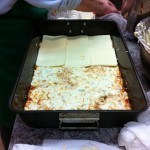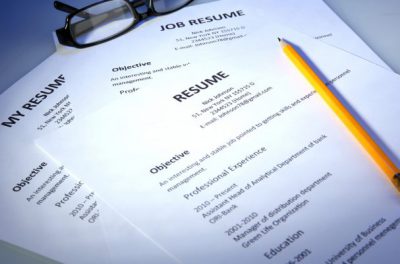Great Resumes Must Be Created
I learned long ago that writing the perfect resume was not much different than cooking. If you’re making your favorite dish—let’s say lasagna—you don’t just throw any old thing into the pot. If my wife caught me putting carrots in her sauce, she’d cut an appendage off, and she wouldn’t be choosy about which one.
Lasagna demands a precise recipe. If you want perfect lasagna you have to follow the recipe. Great resumes are like that too. You can’t just toss things into the mix and expect good results.
What is the recipe for a great resume?
Don’t fret. I’m here to give it you. Let’s begin with…
What You Don’t Put In
When you’re making lasagna—at least in our house—the first thing you do is cut out the carrots. Or, in the case of the resume—the objective. Carrots don’t belong in lasagna and objectives don’t belong on resumes.
Some people like to put green bell peppers in the sauce. They believe it adds flavor. But all it really does is take away from the flavor you want.
Summaries are like peppers; you don’t need them on the resume.

If you think I don’t know about lasagna, take a look at this beauty. My wife has been making some of the best lasagna in the world for 44 years.
What Ingredients Go Into the Lasagna
- Mozzarella
- Pasta (noodles)
- Sauce/gravy (It’s a hotly debated issue among Italians whether it’s called sauce or gravy)
The perfect sauce has to be put together right if you want it to taste good. Here are the primary ingredients.
- Tomato paste
- Tomato sauce
- Crushed tomatoes
- Onions
- Basil (fresh)
- Garlic (numerous cloves)
- Meat
- Pinch of sugar
- Parmesan & Romano cheese (freshly grated, of course)
Optional items: Crushed red pepper and oregano.
What Ingredients Go Into a Great Resume
- Contact information
- Education
- Work history
Just like the sauce, your resume must be put together right if you want it to shine. The education section is simple—it’s like the mozzarella. The work history section is what makes or breaks the resume. Let’s take a look at the ingredients.
- Companies you worked for
- Dates worked at each company (including months)
- Company description
- Titles held (and dates of each position)
- Responsibilities (like the basil—a few sprigs will do.)
- Accomplishments (think garlic—liberal use is recommended)
Optional: Special skills (languages, advanced technical training); patents & publications.

 Construction & Presentation
Construction & Presentation
Even though you have all the ingredients, you still have to put them together properly. Presentation is important. Take a look at Mikki’s lasagna…
Gorgeous, isn’t it? Almost too pretty to eat. Almost.
Back to the construction. It’s critical that the lasagna be put together just right. In this picture, you can see Mikki layering it to perfection.
The same goes for your resume. You can’t cram it into one page using fonts that are too small, or line spacing that forces the gatekeeper to find a magnifying glass to read it. White space is an important part of the resume; in fact, the presentation of your resume might be just as important as the contents. But that’s a topic for another post.
In the meantime, make sure you pay attention to what you put in your resume, or it might end up in the trash.
PS: If you read all of this thinking I was going to give you the recipe for Mikki’s lasagna—I’m going to disappoint you. She doesn’t even give that to our kids.
If you enjoyed this post, please share.






















This is really interesting, You’rea very skilled blogger.
I have joined your feed and look forward to seeking
more of your wonderful post. Also, I have shared your
site in my social networks!